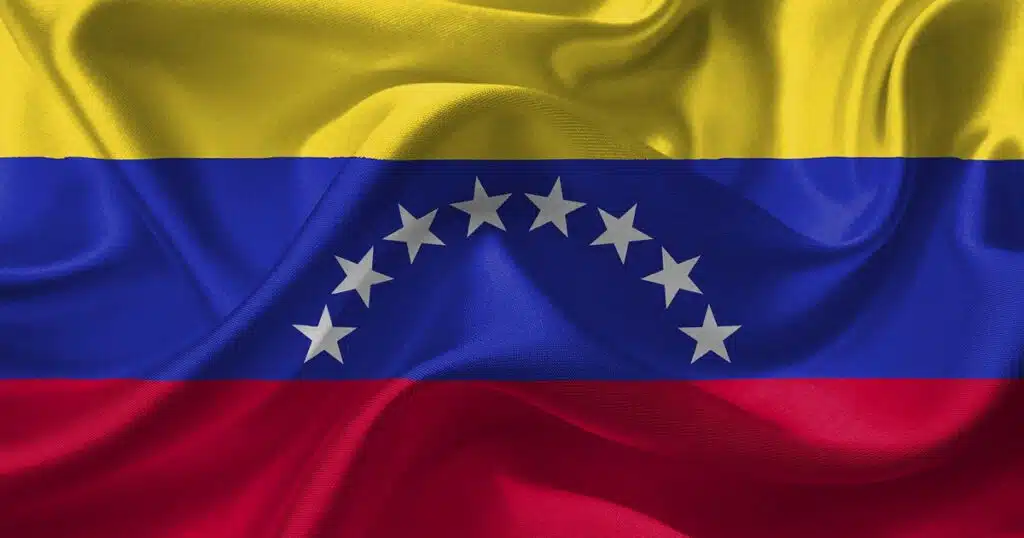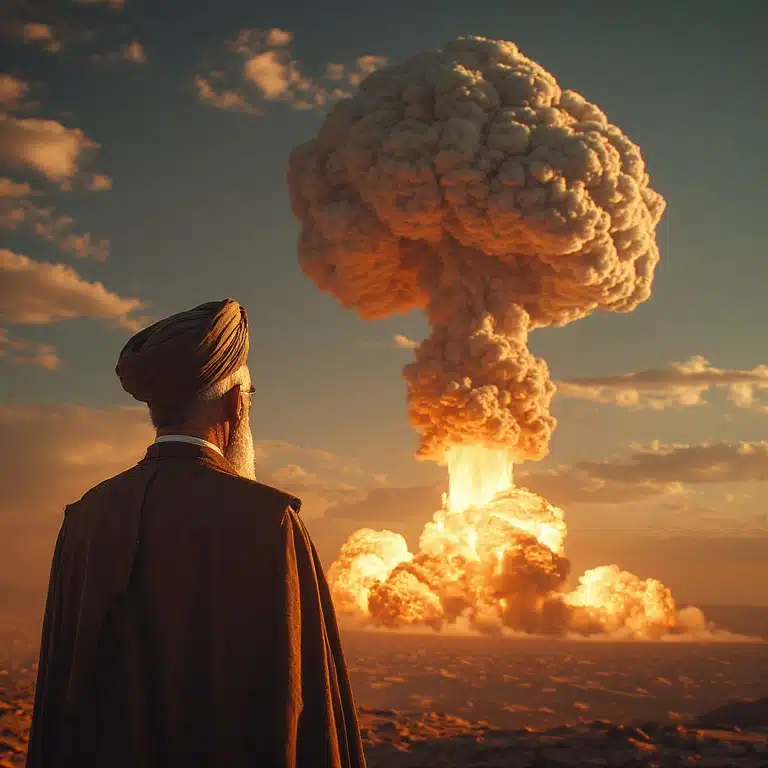
Choke Points of Collapse
Venezuela’s Fragile War Machine
Three U.S. warships, a nuclear submarine, and a Marine detachment are sliding into the Caribbean. By themselves they cannot bring down Nicolas Maduro, but they can blockade ports, choke resupply, and cripple the refineries and substations that keep his state on life support. This is not mere signaling; it is escalation. Across Venezuela’s border, Gustavo Petro has suspended extraditions, voided arrest warrants for drug lords, and bound Colombia’s institutions closer to Caracas. Maduro now speaks openly of uniting both militaries—a narco-political axis taking shape in real time. To wait is to let that axis harden. To act while Venezuela’s forces remain brittle and fuel-starved is to strike when the cost is lowest and the effect most decisive.
On paper the Bolivarian National Armed Forces, assessed at around 120–130,000 active personnel, retain the appearance of a conventional military. In reality, they are hollow at the core, structured more to preserve the regime than to defend the state. The Army makes this clearest. Armored and mechanized formations are concentrated not along viable approach corridors but in the Maracay–Valencia axis, positioned to secure the capital region. The T-72B1V fleet, delivered by Russia, constitutes the notional strike force, with legacy AMX-30Vs still lingering in reserve. Yet sanctions, spares scarcity, and accumulated maintenance debt mean that a meaningful fraction of these inventories is non-mission-capable at any given time. Even the serviceable hulls remain effectively tethered to central depots and to a road network where a single collapsed bridge can immobilize entire columns. In the Llanos the mismatch between equipment and terrain is even starker: tracked armor bogs down in seasonal floods, wheeled vehicles are restricted to a thin lattice of paved roads, and maneuver becomes canalized for months at a time. The lived geography of Apure’s plains ensures that hydrology immobilizes Venezuelan forces more reliably than any opposing fire plan.
The Air Force, though more visible in parades and flyovers, suffers the same structural fragility. Its combat wing rests on three pillars: Su-30MK2s at Barcelona, an aging cadre of U.S.-supplied F-16A/Bs at Maracay, and Chinese K-8 trainers sometimes pressed into light-attack roles. The Su-30s were meant to symbolize a leap into modernity, yet sustained flight operations consume tons of fuel per hour and depend on refining and distribution systems that Venezuela cannot keep reliably online. The force also lacks modern enablers: there is no publicly evidenced AWACS, no reliable tanker fleet, and no robust spares pipeline. Even when Russia provides episodic support, availability rates remain low. What exists on paper is not what can be flown in the air.
Fuel is the ceiling that defines all. Each Su-30 patrol demands steady kerosene throughput that the Paraguaná refining system—Amuay and Cardón—can rarely provide. For years the complex has lurched from fire to blackout, forcing shutdowns that ripple into prolonged aviation-fuel scarcity. As a result, the Air Force is constrained less by pilot hours than by refinery uptime and trucking stability. The Navy has collapsed still further, reduced to little more than a symbolic flotilla. The Mariscal Sucre frigates lie inactive, with one dismantled entirely, while the service relies on Guaiquerí-class OPVs and smaller Guaicamacuto-class patrol craft. These vessels can show the flag, interdict smugglers, and participate in sovereignty displays such as the recent Guyana crisis, but they lack the sensors, magazines, and depth of a combat fleet. They float, but they do not fight.
The deeper pathology is political. Under Chávez and Maduro the officer corps ballooned far beyond operational necessity, with promotion tied to loyalty rather than competence. Procurement became a form of patronage: Russian armor and Chinese systems arrived in impressive quantities on paper, but sustainment pipelines never matched the headlines. Units routinely cannibalize vehicles just to keep a few operational. Western platforms—most visibly the F-16s and Italian naval systems—were orphaned by sanctions, while Russian technical support arrives episodically and is directed toward prestige systems. The result is a force of symbols without depth: fleets that cannot regenerate, designed less to fight for the state than to guard the regime center.
Beneath these institutional distortions lies the more elemental vulnerability of logistics. Venezuela’s constraint is not manpower or hardware but the fuel required to move and sustain them. Civilian rationing has long since penetrated the barracks: in 2019 Lara capped purchases at thirty liters per week, Caracas later limited subsidized sales to around 120 liters per month, and border states like Zulia and Táchira have faced recurring outages. Moving a single armored battalion from Maracaibo to Maicao—roughly 150 kilometers—consumes tens of thousands of liters once tanks, recovery vehicles, and support trucks are accounted for. The T-72 burns about 2.4 liters per kilometer, requiring nearly eight thousand liters for thirty hulls over that distance before any penalties for idling or off-road movement. Every liter must cross the General Rafael Urdaneta Bridge, the only high-capacity artery over Lake Maracaibo, and itself a chokepoint for electricity with 230-kV transmission lines routed beneath. Damage there has previously caused prolonged blackouts. The bridge is both lifeline and liability.
The Llanos corridor magnifies these constraints. Apure’s trunk road runs across a plain where nearly half the land can flood in wet season, reducing maneuver to narrow paved spines. A single washed-out culvert can strand a brigade. Flood seasons have repeatedly cut municipalities off for weeks. Air operations suffer the same arithmetic. Each Su-30 sortie consumes several tons of kerosene per hour; keeping a small patrol cycling requires daily deliveries measured in tens of tons. With Paraguaná frequently operating at less than twenty percent of its design capacity, fighters can surge only briefly before standing down while stocks catch up. Historical precedent underscores the vulnerability. Coalition interdiction in 1991 eroded Iraqi mobility before the ground assault ever began, and Argentina in 1982 fielded modern jets in numbers but could not sustain operational tempo across elongated supply lines. Venezuela is worse off: its choke points are fixed, internal, and visible. A failed refinery unit, an interdicted bridge, or a washed-out road can paralyze entire formations.
These fragilities extend beyond the military into the broader state system. Venezuela’s governing capacity rests on a handful of infrastructure nodes that form not a resilient grid but a brittle web. Guri Dam supplies roughly two-thirds of hydro capacity, and in such a centralized system even partial loss of output risks frequency collapse. The nationwide blackouts of March 2019, triggered by transmission failures along Guri’s long high-voltage corridors, demonstrated how easily disturbances can cascade. NATO’s 1999 strikes on Serbia proved the effectiveness of disabling control and switching stations, producing outages that were reversible yet crippling in the moment. Applied to Venezuela, such shocks would freeze command and control, halt refinery throughput, and immobilize logistics long before repair crews could restore service.
The vulnerabilities converge at the Urdaneta Bridge, which doubles as transport artery and electrical conduit. In 2018, a fire along its 230-kV lines plunged Zulia into prolonged blackout, throttling industry and mobility in the country’s second city. Severing the span would both strand brigades west of the lake and darken Maracaibo, an echo of Allied destruction of the Rhine crossings in 1945. Similar fragility defines Venezuela’s refining and water systems. Amuay and Cardón, the only refineries capable of sustaining jet-fuel production at scale, now operate at less than thirty percent of capacity. Disabling pumping manifolds or power relays could drive throughput below eighty thousand barrels per day; within forty-five days Caracas would face fuel shortages that immobilize armor and ground the Air Force. The Tuy aqueducts, supplying eighty percent of the capital’s water, are equally exposed. Neutralizing pumping stations or power relays would produce urban dysfunction within days: riots in forty-eight hours, sanitation collapse within seventy-two, disease within a week. During the Vietnam War the United States avoided such systems precisely to prevent epidemics, a caution that highlights just how sensitive this lever is. Even telecommunications are brittle. When the March 2019 blackouts struck, NetBlocks measured ninety percent of networks offline, collapsing not only civilian connectivity but government command functions as well.
Geography compounds these vulnerabilities, though under Petro the map has inverted. Corridors that once exposed Caracas now shield it. The Guajira corridor from Maracaibo to Maicao, short and exposed, could once have been devastated by Colombian artillery from La Jagua del Pilar, evoking Iraq’s “Highway of Death” in 1991. Today that flank is silent. The Llanos, vast maneuver space but seasonally paralyzed, once invited Colombian raids from Arauca against depots in San Fernando de Apure. Now Arauca is sanctuary. Even in Amazonas the jungle’s natural limits are no longer sharpened by the threat of Colombian raids. Riverine supply along the Orinoco remains fragile, but external disruption has narrowed. Only the maritime littoral remains fully open. With most of Venezuela’s Navy defunct, U.S. or allied patrols could blockade Puerto Cabello and La Guaira, strangling arms imports. Colombian submarines once figured into this equation; under Petro, their absence is itself a multiplier for Caracas. Amphibious raids on Paraguaná’s refineries remain feasible but would be unilateral rather than binational.
Radar coverage shows the same brittleness. Chinese JYL-1/2 and Russian P-18 radars overlap only around Caracas and Maracaibo, leaving much of the Llanos and Amazonas blind. Centralized control through Caracas makes the system brittle; a single cyber-kinetic strike could collapse surveillance nationwide. NATO’s suppression of Serbian SA-3 batteries around Niš in 1999 illustrated how such aging centralized systems unravel. Venezuela’s difference is that its western flank, once under Colombian ISR and strike threat, is now politically neutralized, forcing the United States to depend on its own assets alone.
Maduro retains asymmetric levers, but they are better suited to delay than to victory. Colectivos, numbering in the low thousands, dominate Caracas barrios with pistols and submachine guns, useful for coercive policing but irrelevant on the battlefield. Cuban advisors have trained FANB in deception—dummy radars, decoy aircraft, disinformation—the same playbook Iraq used in 1991 and Serbia in 1999. Cuban-influenced counterintelligence focuses less on operations than on preventing defections. These measures complicate the adversary’s ISR picture but cannot offset structural vulnerabilities.
Collapse can be measured against thresholds. If the Su-30 fleet drops below four flyable aircraft, nationwide air defense becomes irrelevant. If refinery throughput remains under eighty thousand barrels per day for forty-five days, Caracas faces unmanageable fuel shortages. If blackouts in Caracas extend beyond ninety-six hours, colectivos abandon regime duties to protect their families. And if convoys across the Urdaneta Bridge are interdicted for ten consecutive days, Zulia’s brigades become combat-ineffective. These are not abstractions but empirical markers of systemic unraveling—the military, infrastructural, and social strands of the Venezuelan state collapsing in sequence.
Carlo J.V. Caro is a strategic analyst trained in international security at Columbia University. He has conducted fieldwork on insurgency, refugee governance, and authoritarian resilience across the Middle East, Latin America, and East Asia. He previously served as Vice President of a real estate and sustainability firm, overseeing blockchain-enabled investment systems, green housing finance, and cross-regional procurements across Asia and Latin America.
This article was originally published by RealClearDefense and made available via RealClearWire.



